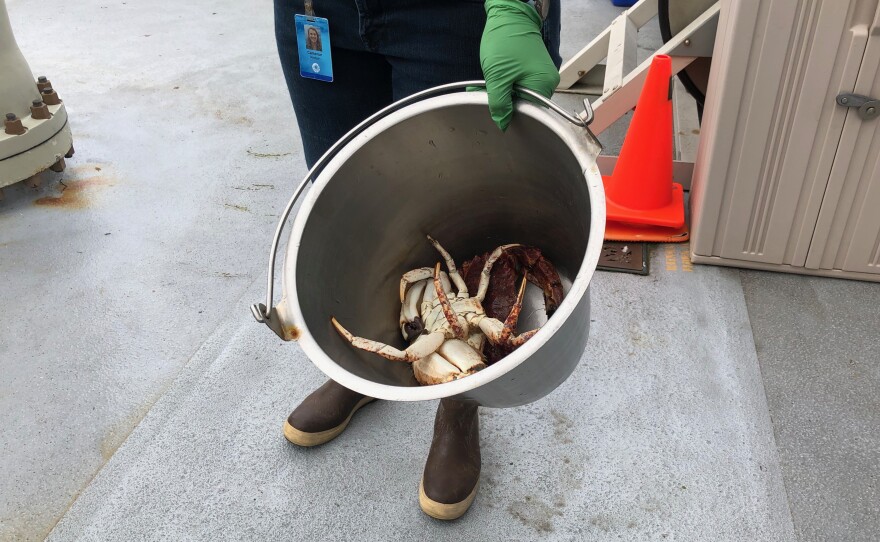Great white shark bites are a leading cause of death in California Sea Otters, according to the Marine Mammal Center. That is how a baby otter named Langly ended up in the center’s care.
“The sharks mistake otters for their more preferred prey of seals and sea lions. And unfortunately many of these attacks end in a fatality for the otter,” says Dr. Cara Field. She's the Staff Veterinarian at the Marine Mammal Center.
Langly was found on a beach in San Luis Obispo County in May of last year. Her mother had been bitten by a shark.
“So when the mom stranded, Langly was found clinging to her, but was still alive and actually in pretty good shape. So the mother actually died during the course of being rescued, and we had this little pup who was not quite ready to be on her own yet,” said Dr. Field. “So we were able to take her in and get her fed up, and slowly help her grow and start to learn how to forage and be an independent sea otter.”
While in rehabilitation, Langly bonded with another stranded young otter named Sprout. Sprout had been rescued off Del Monte Beach in Monterey by the Monterey Bay Aquarium. On Tuesday, both were loaded on a boat in crates and headed back to the ocean.
“We're going to the kelp bed off along Cannery Row. That's kind of just out there, sort of northwest side of the harbor,” said Karl Mayer as he drove the boat. He’s the Sea Otter Field Response Coordinator for the Monterey Bay Aquarium.
Once the crate doors opened, both otters dove out into the Monterey Bay.
Sprout and Langley are tagged and have tracking devices, each programmed to a specific frequency. When the otters are at the surface, a radio receiver on the boat pings. There’s also a plane and pilot on standby to track the otters’ signals by air. On shore, a team is also listening and watching the otters with telescopes. This intense observation will continue for the next two weeks.
“Usually within the first two weeks that they're out there, you've got a pretty good idea of whether things are starting to go well or whether or not you need to intercede and try to recapture,” said Mayer.
It’s a lot of effort for these two otters. Plus, their care up to this point cost about $15,000 per otter. They eat about quarter of their body weight a day in sea creatures like purple urchins, crabs and squid.
Michelle Staedler says their success in the wild is important. She’s the Aquarium’s Sea Otter Program Manager. California Sea Otters remain threatened. Their population has been slowly growing from around 50 in the late 1930s to about 3000 today.
“Years ago, it was over 10,000 otters along the coast of California, and it would be really nice if we could see that again. Most of those animals back then were hunted to near extinction, as we say, for their fur,” said Staedler.
Today the biggest threat is deadly shark bites. But more immediately for otters Sprout and Langly, Staedler says the top concern is that they will have the skills to find enough food to survive.
If the otters struggle too much, they’ll be brought back in for more rehabilitation. But if they adjust, they’ll be considered wild once again.







